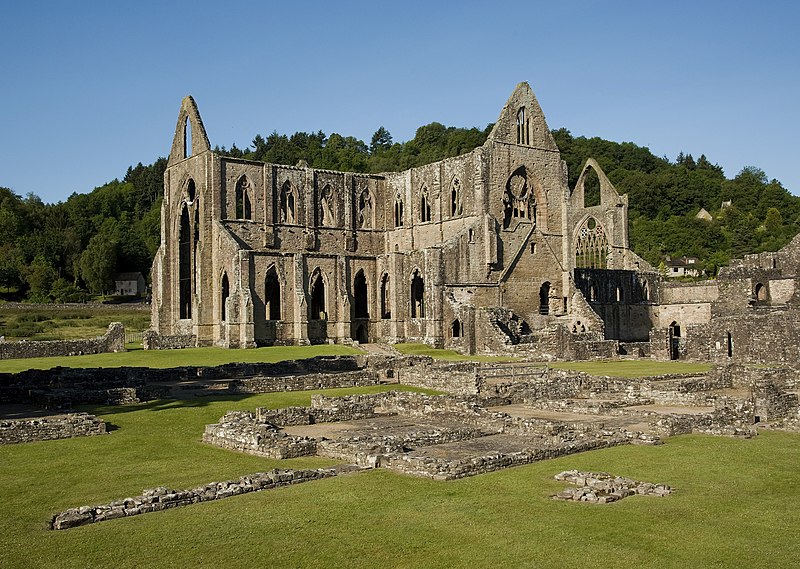9. Stanley Market is a street market in Stanley on Hong Kong Island, Hong Kong. The street is a typical example of a traditional old open-air market in Hong Kong and has since become a major tourist attraction, well known for its bargains. Wikipedia
10.Escalator
Hong Kong boasts the world’s longest outdoor escalator
Starting on Queens Road in Central, the escalator is made up of 20 escalators and 3 moving travellators, and runs for a whopping half a mile.
Hong Kong has been under British rule for more than 150 years
From 1842 to 1997 Hong Kong was a British colony, and between 1941 and 1945, the city was under Japanese occupation.
The whole territory was transferred from the United Kingdom to China in 1997. Hong Kong maintains separate governing and economic systems from that of mainland China under the principle of "one country, two systems".
2. Welsh is a Celtic language of the Brittonic subgroup that is native to the Welsh people and is considered by UNESCO to be the least endangered Celtic language. In 2011 Welsh was given the status of an official language in Wales. Over half a million of Welsh people are native speakers, mainly in North-Western and Western parts of the country.
 One of the constructed languages devised by J.R.R. Tolkien, sindorin used by the Grey Elves, was strongly influenced by Welsh.
One of the constructed languages devised by J.R.R. Tolkien, sindorin used by the Grey Elves, was strongly influenced by Welsh.
The longest town name in Europe is also in Welsh: Llanfairpwllgwyngyllgogerychwyrndrobwllllantysiliogogogoch

ZhouYanRan:
2. Welsh is a Celtic language of the Brittonic subgroup that is native to the Welsh people and is considered by UNESCO to be the least endangered Celtic language. In 2011 Welsh was given the status of an official language in Wales. Over half a million of Welsh people are native speakers, mainly in North-Western and Western parts of the country.
One of the constructed languages devised by J.R.R. Tolkien, sindorin used by the Grey Elves, was strongly influenced by Welsh.
The longest town name in Europe is also in Welsh: Llanfairpwllgwyngyllgogerychwyrndrobwllllantysiliogogogoch
Welcome back. Haha...
3. The Welsh Flag
Wales is famous for having a dragon on its flag. Wales is part of Great Britain, so its official flag is the Union Jack. However, the national flag is charming, cool, and historic!
The Welsh flag has an interesting backstory. The red dragon has been a symbol of Wales for at least 1000 years and derives from an alleged prophecy made by Myrddin (that’s Merlin, to most of us).
Apparently, the red, Welsh dragon would defeat the white, Saxon dragon and restore Wales back to its native people. While that hasn’t happened yet, the Welsh are extremely proud of their dragon flag, and who can blame them?!

4.Author Roald Dahl
The world-famous children’s author Roald Dahl was born in Cardiff in 1916. His beloved books, including Charlie and the Chocolate Factory, Matilda, and The BFG, have sold more than 250 million copies worldwide. Dahl lived in a Tudor house opposite Llandaff Cathedral School, and read his stories to the children there.
ZhouYanRan:
2. Welsh is a Celtic language of the Brittonic subgroup that is native to the Welsh people and is considered by UNESCO to be the least endangered Celtic language. In 2011 Welsh was given the status of an official language in Wales. Over half a million of Welsh people are native speakers, mainly in North-Western and Western parts of the country.
One of the constructed languages devised by J.R.R. Tolkien, sindorin used by the Grey Elves, was strongly influenced by Welsh.
The longest town name in Europe is also in Welsh: Llanfairpwllgwyngyllgogerychwyrndrobwllllantysiliogogogoch
how do they ask direction for this place ?
@ Komentator, I missed you too :)
@Minchane, I have no idea :D they probably just ask about the town with super long name ;)
5. Wales - the land of castles
The Welsh pride themselves on having the most castles in the world. Nearly five hundred fortresses have been preserved on the Welsh land. This gives Wales the most castles and fortifications per square kilometre.
Cardiff Castle
Conwy Castle
6. Daffodils and leeks
Wales is known for having not one but two national emblems: the daffodil and the leek.
The leek was the original symbol of Wales and its use dates back to the 7th century. Apparently, St. David (more on him later) is rumored to have advised the Welsh to wear leeks on their hats to indicate whose side of the battle they were on against invading Saxons.
As for the daffodil…well, that’s a different story. The Welsh word for daffodil is “Cenhinen” and “leek” in Welsh is “Cenhinen Pedr”, which roughly translates as “Peter’s Leek”. Essentially, someone in the 19th century forgot to attribute a leek to Peter and people assumed they meant daffodil.
Both are used to this day to symbolize Welshness!







 The unique atmosphere of this place have inspired many painters and poets throughout the centuries.
The unique atmosphere of this place have inspired many painters and poets throughout the centuries.

